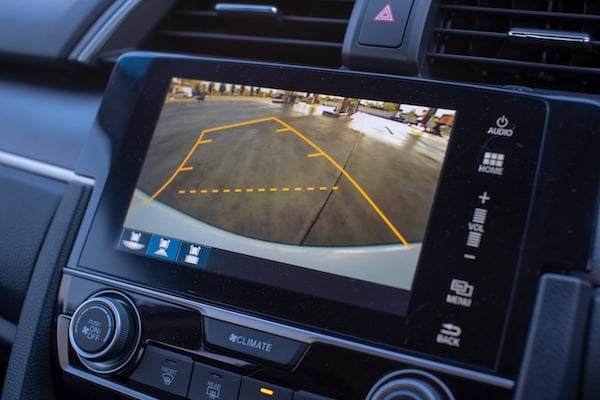Technological advancements in the automotive industry changed the way we use cars. From power-steering, airbags, and now the concept of smart cars. But did you know that one particular feature is now required by law?
In 2014, a federal law was passed, giving car companies four years to comply with. Starting May 2018, manufacturers need to have rearview cameras installed in compliance with the new law.
The Back-Up Camera Law
In 2008, Congress passed a law that required regulators to take specific measures in adapting newer technology to improve rearview visibility. According to the National Highway Safety Traffic Administration (NHTSA), there are at least 500,000 backing accidents of some type every year.
Out of the 500,000 average, over 15,000 of those cases involve some injury and some 210 result in death. What is worse is that 31% of the deaths were primarily children five years old and under, and 26% were older people 70 years old and older. According to statistics, almost 70% of children’s deaths occurred while their parents or family members were behind the wheel. (Source: Hildebrand and Wilson)
After years of delay, the US Department of Transportation (DOT) announced the rearview camera requirement in 2014. The DOT provided some lead time for automotive manufacturers to prepare for this new requirement.
On May 2, 2018, the law went into effect. It basically requires all newly manufactured vehicles to have rearview cameras and video displays. Before the law, only high-end cars had this feature, but now, even entry-level vehicles come equipped with the technology.
The president of Advocates for Highway and Auto Safety, Cathy Chase, says that the new federal law is a massive help for the safety of children, pedestrians, cyclists, and other vulnerable road users. (Source: CNBC)
The Insurance Institute for Highway Safety’s Experiment on Rear View Cameras
The Insurance Institute for Highway Safety (IIHS) conducted a study and confirmed that rearview cameras had improved the statistics of accidents related to backing up vehicles. The study was conducted in an empty parking lot, where participants were told they were testing out the car’s entertainment system. The researchers would put a foam cutout on a child at random times during the study.
The study confirmed that the new technology reduced backing up accidents up to 90% of the time, despite their findings that SUVs had the worst visibility when backing up. The IIHS still relates that the new technology does not entirely nullify any accidents occurring while a driver backs up. Lighting, weather, and driver inattentiveness can still cause accidents. (Source: Kelly Uustal)
The Pros and Cons of Rear View Cameras
While this safety feature is relatively new, it is still not perfect. Here are a few benefits and downsides to it.
Pros
- Cost-Effective – consumers no longer need to pay additional fees to have rearview cameras installed as, by law, all newer vehicles need to have them installed.
- Assists in parallel parking – dramatically improve visibility of the available space when a driver attempts to park in tight spaces.
- Overall awareness of the surroundings – the technology gives drivers more attention to what they cannot see by using the rearview mirrors.
Cons
- False confidence – rearview cameras may give the driver false confidence. The cameras are helpful, but they cannot display everything and are just an aide for drivers. It is still the driver’s responsibility to be fully aware of their surroundings while operating their vehicles.
- Does not entirely avoid accidents – accidents still occur even when there is a rearview camera installed.
(Source: Mitch Grissim)
